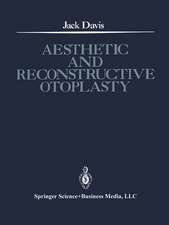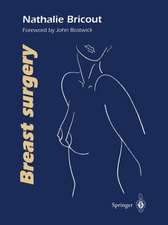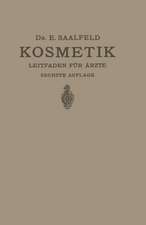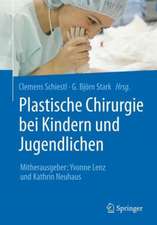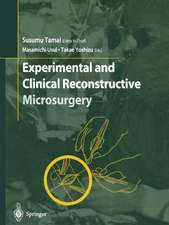Biomaterials, Medical Devices and Tissue Engineering: An Integrated Approach: An integrated approach
Autor F.H. Silveren Limba Engleză Paperback – 17 sep 2012
| Toate formatele și edițiile | Preț | Express |
|---|---|---|
| Paperback (1) | 1410.61 lei 43-57 zile | |
| SPRINGER NETHERLANDS – 17 sep 2012 | 1410.61 lei 43-57 zile | |
| Hardback (1) | 1417.54 lei 43-57 zile | |
| SPRINGER NETHERLANDS – 30 noi 1993 | 1417.54 lei 43-57 zile |
Preț: 1410.61 lei
Preț vechi: 1484.86 lei
-5% Nou
Puncte Express: 2116
Preț estimativ în valută:
269.91€ • 282.57$ • 223.34£
269.91€ • 282.57$ • 223.34£
Carte tipărită la comandă
Livrare economică 07-21 aprilie
Preluare comenzi: 021 569.72.76
Specificații
ISBN-13: 9789401043168
ISBN-10: 9401043167
Pagini: 312
Ilustrații: VII, 303 p.
Dimensiuni: 155 x 235 x 16 mm
Greutate: 0.44 kg
Ediția:Softcover reprint of the original 1st ed. 1994
Editura: SPRINGER NETHERLANDS
Colecția Springer
Locul publicării:Dordrecht, Netherlands
ISBN-10: 9401043167
Pagini: 312
Ilustrații: VII, 303 p.
Dimensiuni: 155 x 235 x 16 mm
Greutate: 0.44 kg
Ediția:Softcover reprint of the original 1st ed. 1994
Editura: SPRINGER NETHERLANDS
Colecția Springer
Locul publicării:Dordrecht, Netherlands
Public țintă
ResearchCuprins
1 Scope and markets for medical implants.- 1.1 Introduction.- 1.2 Markets for medical implants.- 1.3 Materials of construction.- 1.4 Pre-clinical and clinical biocompatibility evaluation.- 1.5 Biology of transplantation of tissue products matching.- 1.6 Federal Food and Drug Administration (FDA) regulations.- 1.7 Summary.- 2 Wound dressings and skin replacement.- 2.1 Introduction.- 2.2 Biochemistry of skin.- 2.3 Mechanical properties of skin.- 2.4 Repair of skin.- 2.5 Incidence of skin wounds.- 2.6 Wound dressings.- 2.7 Summary.- 3 Replacement of skeletal tissues.- 3.1 Introduction.- 3.2 Anatomy and physiology of tendons and ligaments.- 3.3 Biochemistry and biophysics.- 3.4 Mechanical properties of ligament.- 3.5 Repair of ligament.- 3.6 Clinical evaluation of ligament function.- 3.7 ACL reconstruction using biological and synthetic materials.- 3.8 Total joint replacement.- 3.9 Materials used in total knee replacement (TKR).- 3.10 Summary.- 4 Biomaterials used in ophthalmology.- 4.1 Introduction.- 4.2 Anatomy of the eye.- 4.3 Biochemistry of eye structures.- 4.4 Mechanical properties of ocular tissues.- 4.5 Corneal wound healing.- 4.6 Viscoelastic solutions.- 4.7 Intraocular lenses.- 4.8 Contact lens materials.- 4.9 Eye shields.- 4.10 Other ocular materials.- 4.11 Summary.- 5 Cardiovascular implants.- 5.1 Introduction.- 5.2 Physiology and anatomy of vessel wall and heart valve.- 5.3 Anatomy and physiology of blood components.- 5.4 Mechanical properties of aorta and valve.- 5.5 Repair of cardiovascular tissue.- 5.6 Pathophysiology of aortic and valvular diseases.- 5.7 Aorta and heart valve replacements.- 5.8 Cardiac valve replacements.- 5.9 Summary.- 6 Facial implants.- 6.1 Introduction.- 6.2 Biochemistry of facial tissues.- 6.3 Mechanical properties of facial tissues.-6.4 Repair of facial structures.- 6.5 Types of procedures performed in facial plastic surgery.- 6.6 Synthetic implant materials.- 6.7 Solid facial implants.- 6.8 Mesh materials.- 6.9 Summary.- 7 Dental implants.- 7.1 Introduction.- 7.2 Impression materials.- 7.3 Denture base resins.- 7.4 Restorative resins.- 7.5 Cements for restorations.- 7.6 Dental porcelains.- 7.7 Base metal alloys for dental castings.- 7.8 Other materials, collagen.- 7.9 Summary.- 8 Breast implants.- 8.1 Introduction.- 8.2 Anatomy and physiology of the breast.- 8.3 Psychology of breast augmentation.- 8.4 Types of breast implants.- 8.5 Complications associated with use of breast implants.- 8.6 Complications with poly(urethane)-covered implants.- 8.7 Implant placement.- 8.8 Current concerns.- 8.9 Summary.- 9 510 (k) and PMA regulatory filings in the US.- 9.1 Introduction.- 9.2 Components of a 510 (k) regulatory filing.- 9.3 Premarket approval (PMA) application.- References.
Recenzii
`This is a good textbook for engineers who intend to develop medical devices and for students who wish to study biomedical engineering.'
Frontiers Medical and Biological Engineering
Frontiers Medical and Biological Engineering


